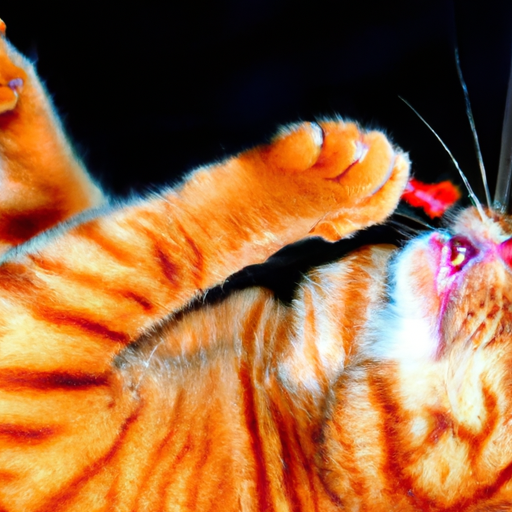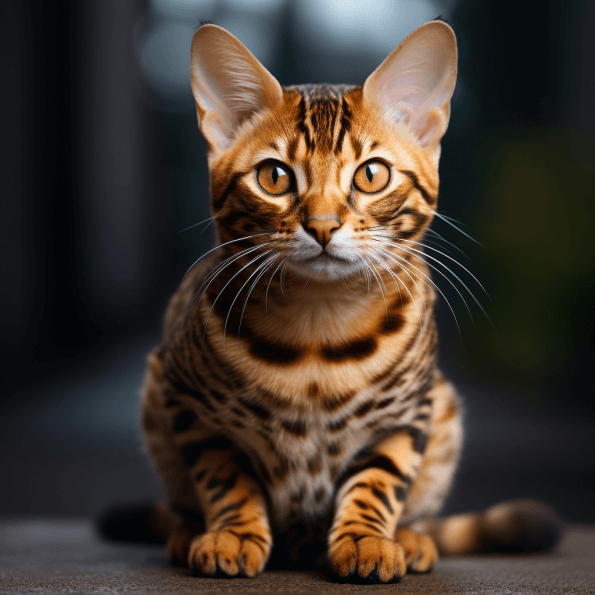What Does Catnip Do To Cats?
Ever wondered about the effect of catnip on your furry friends? You’re about to find out! This insightful piece will unravel the intriguing influence of catnip on cats, and equip you with some interesting knowledge along the way. Expect to learn why cats love it, what it does to them, and even some fun facts you never knew about this peculiar plant.
What Does Catnip Do To Cats?

Understanding Catnip
Catnip, a member of the mint family, is well known for the intriguing and at times, entertaining reactions it can solicit in our feline companions. You might have heard of it, or even seen your own cats behaving bizarrely around it. But what is this mystery plant? Let’s delve into it.
Origins and Types of Catnip
Believed to have originated from the Mediterranean and Northern Africa, catnip is now commonly found worldwide. The primary type of catnip that enthralls cats so much is called Nepeta cataria. It’s a perennial plant that bears white to lilac-pink flowers.
Chemical Composition of Catnip
The magic ingredient in catnip is a volatile oil called nepetalactone. This is what catalyzes the infamous catnip reaction, and it’s found in the leaves and stems of the plant.
Effects of Catnip on Cats
Physical Response to Catnip
In reaction to catnip, cats tend to roll, flip, rub, and eventually zone out. They may meow or growl, often they drool. This response typically lasts for 10 minutes, after which your cat becomes temporarily immune to more catnip for roughly 30 minutes.
Genetic Predisposition to Catnip Sensitivity
Not all cats are affected by catnip. Sensitivity to it is inherited, and it’s estimated that about one third of cats lack the gene that enables them to react to catnip.
Behavioral Changes Due to Catnip
If your cat does react, they may undergo behavioral changes, often exhibiting hunting and playful behaviors not typically seen in their normal routine.
Usage of Catnip for Cats
Popular Catnip Products
Catnip is widely used in feline-oriented products like toys, sprays, and scratchers to draw a cat’s attention and promote activity.
Benefits of Catnip for Cats
Catnip’s great for encouraging exercise and mental stimulation. It can provide enrichment, help to combat boredom, and ease stress for your feline friend.
Potential Risks and Overuse
While generally safe, excessive use of catnip can result in mild gastrointestinal upset. It’s also crucial to note that catnip should not replace regular veterinary care.
Variations in Cat Response to Catnip
Age-based Response to Catnip
Kittens younger than two months typically showcase no reaction to catnip. The response comes around 3 to 6 months and is more prevalent as cats mature.
Species-specific Response to Catnip
Some individual cats and certain breeds seem to be more responsive to catnip than others, with most domestic cats being receptive.
Individual Differences in Catnip Response
Each cat has their unique reaction to catnip. Some cats become hyperactive, while others seem to calm down.

Role of Catnip in Training and Play
Using Catnip for Behavioral Training
Catnip can be used as a training aid, for instance, to attract your cat to their scratching post instead of your furniture.
Incorporating Catnip in Play
Catnip can play a significant role in interactive play, which can help to build a bond between you and your cat.
Alternatives to Catnip for Cats
Valerian Root and Cats
For cats who don’t respond to catnip, valerian root might be an alternative as it elicits similar reactions in some cats.
Honeysuckle Toys for Cats
Another substitute for indifferent cats might be honeysuckle, as some cats who don’t react to catnip do display interest in honeysuckle toys.
Silver Vine and Cats
Silvervine, a plant native to Japan, can also invoke playful behaviors in cats, similar to catnip.
Understanding Catnip Immunity in Cats
What Causes Catnip Immunity?
When cats are exposed to catnip regularly, they can develop immunity, meaning they become less responsive or unresponsive to it.
How Common is Catnip Immunity?
Surprisingly, immunity is more common than you might think! About 33% of all cats lack a reaction to catnip.
Coping Strategies for Catnip-Immune Cats
If your cat is immune, don’t worry! You can try other forms of interactive play or consider alternatives like valerian root, honeysuckle toys, or silver vine.
Scientific Research on Catnip and Cats
What Research Reveals About Cats and Catnip
Research shows that catnip triggers receptors in the cat’s nose, which mimic feline “happy” pheromones.
Unanswered Questions in the Field
There is still much we don’t understand about the catnip phenomenon. For example, why do some cats not react at all?
Future Directions for Catnip Studies
More research is needed to explore the potential therapeutic uses of catnip for cats, such as reducing anxiety or helping with appetite.
Human Use of Catnip
Historical Uses of Catnip
Humans have used catnip for hundreds of years too. Traditionally, it’s been used for its sedative effects in herbal remedies.
Modern Uses and Benefits of Catnip
Today, catnip can be used as a stress reliever and sleep aid for humans. It’s also a popular insect repellent.
Conclusion
Summary of What Catnip Does to Cats
Catnip can bring about a playful reaction in cats due to the chemical compound nepetalactone, though not all cats respond to it.
Balancing Use and Safety of Catnip with Cats
As with anything, it’s important to use catnip in moderation and remember that not all cats have the same reaction to it. Always monitor your cat when introducing any new element into their environment to ensure they are enjoying it safely.
That’s all the ‘nip scoop. Now you can navigate the catnip aisle like a pro!







